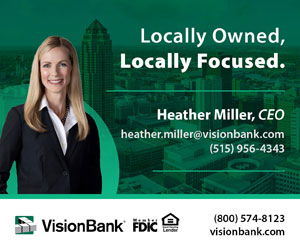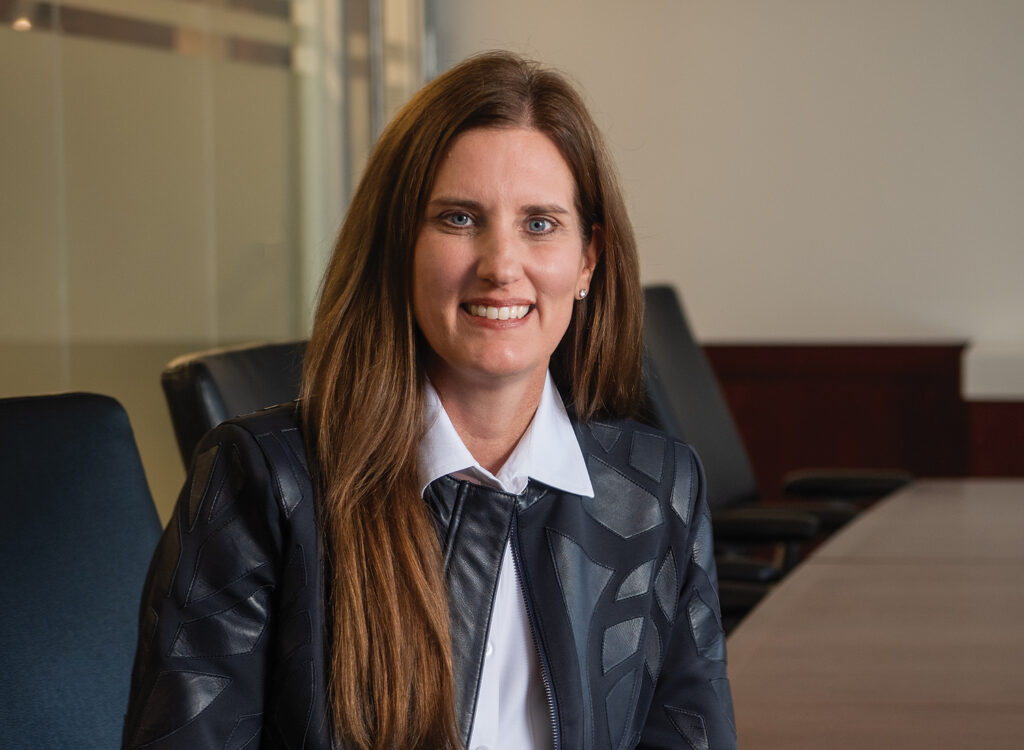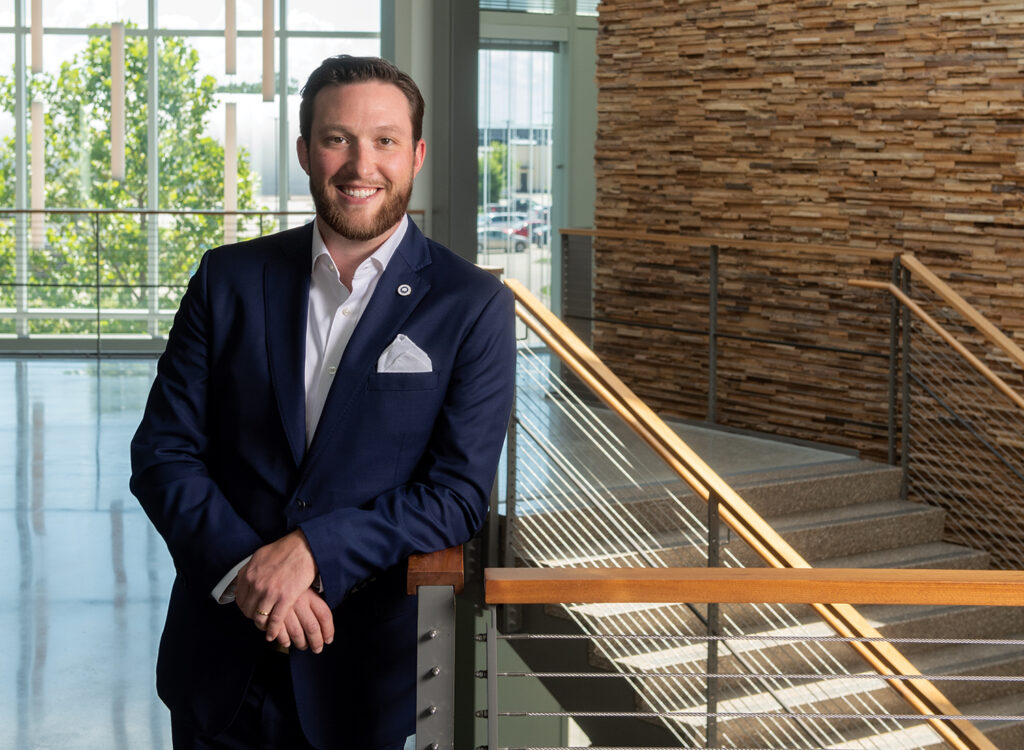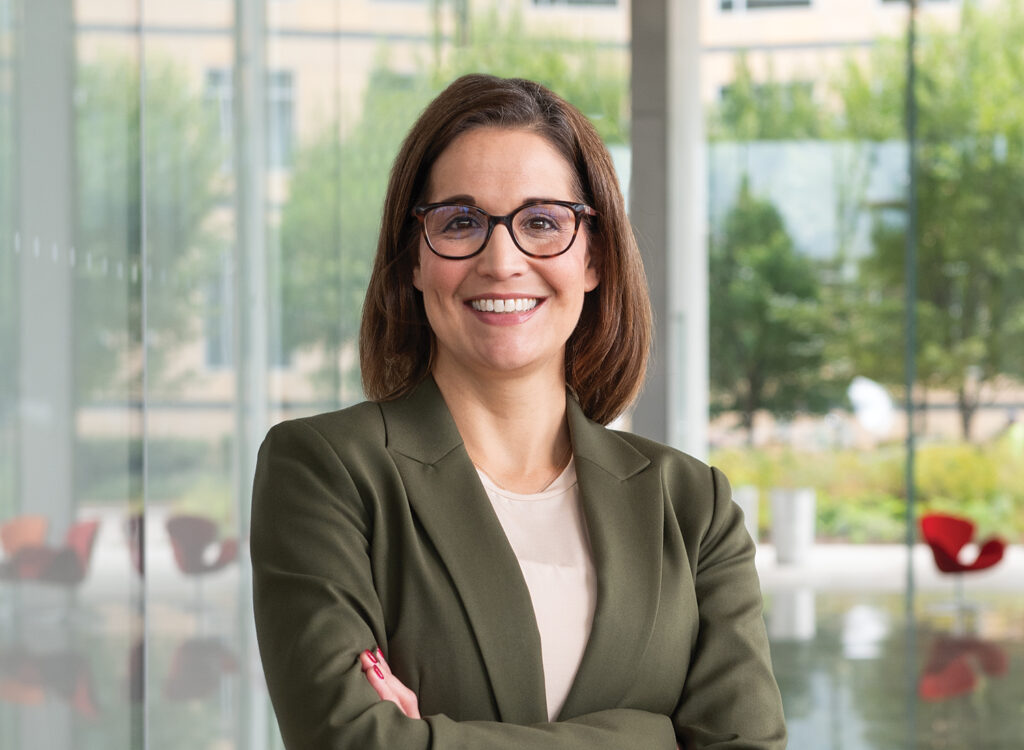Banking with purpose
VisionBank’s new PurposeBank division to ‘pay forward’ with 10% of profits

JOE GARDYASZ Oct 12, 2022 | 8:02 pm
5 min read time
1,220 wordsBanking and Finance, Business Record Insider
After having had a successful business banking relationship with VisionBank for more than a decade, Central Iowa entrepreneur Christina Moffatt has joined the bank’s staff to promote PurposeBank — VisionBank’s newly launched subsidiary geared toward providing lending services to minority- and women-owned small businesses.
Women-owned and minority businesses have been among the hardest-hit by the economic turmoil brought on by the pandemic, said Moffatt, who became PurposeBank’s first employee earlier this year as business development officer. Moffatt is the founder of Crème Cupcake + Dessert in Des Moines, which she sold to Sammy Mila earlier this year, and most recently was director of small business resources with the Greater Des Moines Partnership before joining PurposeBank.
PurposeBank’s niche in lending to disadvantaged small businesses is augmented by a commitment to contribute 10% of its profits to financial literacy and entrepreneurial-focused nonprofit organizations. The pay-it-forward approach is one that Moffatt and VisionBank leaders believe will resonate with many small business owners as both borrowers and depositors.
“I don’t have a background in banking, but I have a background in entrepreneurship and working with small businesses year after year to get them ready for the loan process and then keeping them strong,” Moffatt said. “I feel like my entire career has led me here to make an impact.”
To lead the lending team, VisionBank CEO Heather Miller recruited Jenny Leonard, a veteran banker who has spent much of her career in commercial lending. Leonard has worked at all levels within the banking industry, including an international bank, a large state bank, a regional bank and a smaller community bank. While each had its philanthropic endeavors, none had the 10% provision that PurposeBank has established.
“Much like Heather, I can do loans anywhere,” Leonard said. “I can grow books of business with all the amazing, well-established companies here in town. But to be able to do that with all the folks I’ve done business with for over a decade here in Des Moines and know that 10% is going to help others ‘know what they don’t know’ gets me super excited,” she said.
“It’s purposeful banking, and it provides an intentional bank partner for all those well-established businesses as well as provides a resource to those often underserved [small businesses]. And what is more exciting than anything, those large established businesses, a lot of them started just like these little guys. They were somebody working out of their garage, they were someone working in their basement. They were someone doing a side hustle, or they were just full of grit and no one taught them anything and they had to learn things the hard way without some resources to figure it out.”
How is this giving different from the federal Community Reinvestment Act requirements that all banks must meet?
Moffatt: This [10% contributions] is in addition to that — so it is actually an entire other level that we take out, and we will still meet our Community Reinvestment funds [requirements].
[The Community Reinvestment Act, enacted in 1977, requires the Federal Reserve and other federal banking regulators to encourage financial institutions to help meet the credit needs of the communities in which they do business, including low- and moderate-income neighborhoods. Banks are evaluated using one of five evaluation methods tailored to a bank’s size or business strategy. The Federal Reserve makes banks’ performance evaluations public through an online database that can be searched using institution or exam criteria or by bank branch location.]
What will the process be for deciding how the 10% from net profits are used?
Leonard: Those funds will be designated by a third-party advisory board that we’re putting together. So it’s not just [the CEO] or any employees of the bank picking it. It is individuals representing a wide, diverse group of companies and nonprofits who know where these needs are.
What is the relationship between PurposeBank and VisionBank?
Leonard: PurposeBank is a division of VisionBank. For any bank, you can look up our financials on the FDIC page. To keep us accountable, we obviously have our own ledger within VisionBank, just like any other branch or market. … So it will be very transparent what that number is. We know amongst ourselves what our strategic goals are to make that happen — we can’t just break even or there’s nothing [from which] to give 10%. So we know internally what numbers we have to hit, and we hope to do that within a year.
Why this arrangement rather than a new bank charter?
Leonard: To start a bank, obviously you would need a lot of capital and you would need to put all your compliance and back office operations in place. So it is more efficient and a better use of funds and resources to make it a division of an existing bank. And that is a way the regulators as well could be comfortable with it, because a new bank is going to get different guidelines on scrutiny, as it should, compared to an existing bank. We have a credit culture that is proven. We can use [VisionBank’s] credit team; we can use our loan ops team. We can also use our retail [lending] team, which is fantastic for small business owners. So there are branches across the metro that can utilize PurposeBank.
Besides the 10% profit contributions, what else will distinguish PurposeBank?
Leonard: Other banks, in my opinion, don’t have the kind of business adviser piece that is Christina.
Moffatt: For me, I coach them, and I’m getting them ready. It’s what I’ve done in the past — getting all of their business plan [elements] ready. So I can actually look through their business plan for missing pieces before I ever connect them with Jenny. … Our goal is not just to make that loan — our goal is to actually get these businesses to grow.
Would you say you’re bringing a pretty good following of entrepreneurs with you?
Moffatt: Without even getting started, some longtime clients have intentionally moved their banking needs here because they started as the small guy, and they want to be able to pay it forward. … From my own past experience, I remember what it was like to go through the loan process. I was turned down multiple times for a loan, so I know what that piece feels like too. But I never knew why [I was turned down]. So even if we have to deny someone, it’s making sure they understand why. It may be they need more collateral, they need more capital, they need more time, or they need more coaching, or the business plan isn’t quite right.
How will having PurposeBank as a division affect VisionBank’s commercial lending operation?
Moffatt: We still have commercial lenders on the VisionBank side, and they’re still doing their lending. We’ve actually started to pull some of them over to our side to manage what we have coming in. … We’re walking through it with some of our commercial lenders. They still have their book of business [at VisionBank]. But if their customer would say, “I want to send [the loan application] through PurposeBank,” our VisionBank lenders still hold that relationship. They can just do [the loan] under PurposeBank so that their clients get that 10% paying forward.









